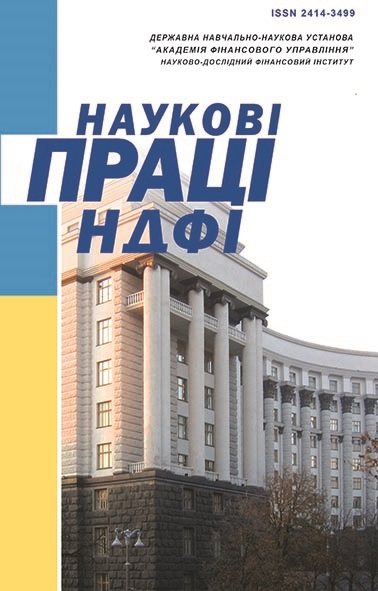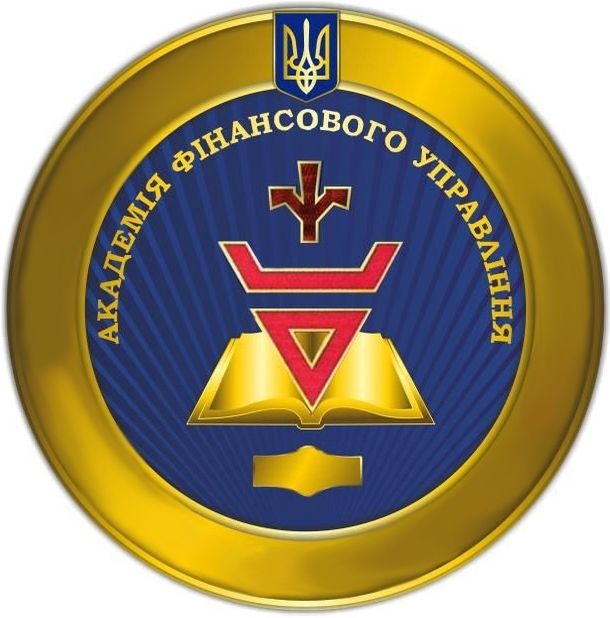
|
№ 4/2023№ 4/2023 | Nauk. pr. NDFI 2023 (4): 124–136https://doi.org/10.33763/npndfi2023.04.124 | ACCOUNTING AND TAXATION KUKOBA Andriy 1 1SESE “The Academy of Financial Management”
OrcID ID : https://orcid.org/0000-0002-8105-497X
Procedure of converting data into non-financial reports for the management of business entities
Introduction. At present at the company level has been formed a system of special communications, which is based on the exchange of data on the state and dynamics of the development of participants in socio-economic relations - reporting, financial and non-financial. The organization of the implementation of non-financial reporting procedures for different business entities differs significantly from each other, which does not allow to effectively and quickly report on non-financial, even related, aspects of activity. Problem Statement. The Ukrainian system of internal corporate reporting is at the stage of development, in particular in terms of establishing regulations for the circulation of reports between interested parties of companies. The purpose of the article is theoretical justification of the order of operations in the procedures for the formation of non-financial reporting of business entities, which will optimize the composition and sequence of such operations, the routes of data on the status and changes in the parameters of business entities. Methods. Used: institutional approach, comparative analysis method, synthesis method, classification method. Results. Each business entity in accordance with its own business processes daily performs a large number of business transactions. These operations affect the direction of changes in the state of this business. To determine the state and directions of development of an entity, data on the processes of its functioning are constantly collected and sent in the form of specialized reports to stakeholders. The process aspects of the business activities of corporate entities have been studied for many decades, but the processes of creating and transmitting reports were almost not studied, since they were considered insignificant. However, the speed of receiving reports on the state of the business entity and their content significantly affect the timeliness of the adoption and effectiveness of managerial decisions regarding the adjustment of business processes that are considered the most important for the entity. Therefore, the article provides a general description of the procedure for the processes of formation and use of business reporting, which allows to optimize the exchange of data on the status and changes in the entity. This provides an increase in the efficiency of the exchange of necessary data without reducing their reliability, speeds up the processes of data exchange, determines the optimal number of data recipients. Also, this article graphically presents generalized directions of movement of internal and external reporting of these subjects in the implementation of vertical and horizontal communications between organizational elements. Application in practice of the theoretical proposals given in the article will streamline the reporting processes of entrepreneurial organizations. Conclusions. Reports are moving not only within a particular entity, but also beyond. At the same time, the larger the level of corporatism of the subject, the greater the amount of reporting he submits to external stakeholders and management bodies of different levels. Due to the fact that until now the features of routing reporting, both within enterprises and beyond, have not been studied, there is a need for further research on the aspect of optimizing the routes of internal and external reporting of business entities. Keywords:accounting, procedure, non-financial reporting, management report, information data, internal reporting, management JEL: L86, M21, M41
Kukoba A. . Procedure of converting data into non-financial reports for the management of business entities / A. Kukoba // Наукові праці НДФІ. - 2023. - № 4. - C. 124-136. | Article original in Ukrainian (pp. 124 - 136) | Download | Downloads :8 |
1. Hladii, I. O., Dziuba, O. M., & Maister, L. A. (2019). Management reporting. Vinnytsia: RVV VTEI KNTEU [in Ukrainian].
2. Lovinska, L., Ozeran, A., & Korshykova, R. (2022). Accounting and financial statements in the conditions of martial law in Ukraine. Finance of Ukraine, 4, 92–106 [in Ukrainian]. doi.org/10.33763/finukr2022.04.092
3. Kucheriava, M. (2022). Organizational and methodological aspects of Ukrainian entities’ non-financial reporting during the wartime. Finance of Ukraine, 5, 115–128 [in Ukrainian]. doi.org/10.33763/finukr2022.05.115
4. Nimchynov, P. P. (1977). General accounting theory. Kyiv: Higher School [in Ukrainian].
5. Oliinyk, Ya., Kucheriava, M., & Zinchenko, A. (2021). Impact of regulatory requirements on entities non-financial reporting: the case of Ukraine. In 5th International Scientific Conference – EMAN 2021 – Economics and Management: How to Cope With Disrupted Times, Online/Virtual, March 18, 2021 (Selected papers), pp. 39–54. Belgrade, Serbia: Association of Economists and Managers of the Balkans. doi.org/10.31410/EMAN.S.P.2021.39
6. Khomyn. P. (2004). Accounting for reporting on financial results must be methodologically sound. Accounting and Auditing, 6, 9–15 [in Ukrainian].
7. Pohorilko, V. F., & Liubyva, T. Ya. (2011). Information. In Dziuba I. M. et al. (Eds.). Encyclopedia of Modern Ukraine (online version). Kyiv: Institute of Encyclopedic Research of the National Academy of Sciences of Ukraine. Retrieved from esu.com.ua/article-12485 [in Ukrainian].
8. Shannon, C. E. (1948). A Mathematical Theory of Communication. Bell System Technical Journal, 27 (3), 379–423. doi.org/10.1002/j.1538-7305.1948.tb01338.x
9. Shemchushenko, Yu. S. et al. (Eds.). (1998). In Legal encyclopedia (In 6 Vols.). Kyiv: Ukrainian Encyclopedia [in Ukrainian].
10. Verkhovna Rada of Ukraine. (1992). About information (Act No. 2657-XII, October 2). Retrieved from zakon4.rada.gov.ua/laws/show/2657-12 [in Ukrainian].
11. DSTU 2226–93. Automated systems. Terms and definitions. National Standards of Ukraine. (1993). Retrieved from document.ua/avtomatizovani-sistemi.-termini-ta-viznachennja-nor16796.html [in Ukrainian].
12. ISO/IEC 10746-2:2009. Information technology. Open distributed processing. (2009). Retrieved from www.iso.org/ru/standard/55723.html.
13. Information Technology. (2018). In Dictionary of terms. Kyiv: UkrNDNC. (National Standard of Ukraine). Part 37: DSTU ISO/IEC 2382-37:2018 (ISO/IEC 2382-37:2017, IDT). Biometrics [in Ukrainian].
14. Verkhovna Rada of Ukraine. (2003). Civil Code of Ukraine (Act No. 435-IV, January 16). Retrieved from zakon.rada.gov.ua/laws/show/435-15#Text [in Ukrainian].
|





